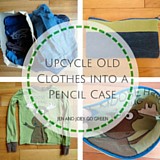Yoga pants and an I heart NJ shirt is what I am currently sporting. Neither are eco-friendly. In fact I barely have any eco-friendly clothing. There are a few reasons for this. They are next to impossible to find in a store here (It is really hard for me to buy clothes online because I need to try them on first - the curse of having boobs). They can be hella expensive and I don't trust a lot of what companies are selling as eco-friendly clothing
I have come across some fantastic companies and love how they are shaping the sustainable clothing industry. Check out Rapanui who is by far my favourite and is a Help Me Save Langley Premium Sponsor.
I am sure you have thought about the labour involved in making your clothes and if it is ethical. I am sure you have thought about the chemicals involved in dyes and bleaches. But have you thought about the water involved in the production of clothing?
The global average water consumption for each kilogram of cotton is 10,000 litres. This means a typical t-shirt requires 2500 litres of water in its production and jeans will require on average 8000 litres. Since this is a global average it means where your cotton shirt originates from will impact the amount of water used to produce it. India uses the most water (22,500L) followed by Pakistan (9600L), the US (8100L) and then China (6000L).
This is a great infographic from Waterfootprint that shows the breakdown on type of water used in cotton production. Green water is the precipitation on land that does not run off or recharge the groundwater but is stored in the soil or temporarily stays on top of the soil or vegetation. Eventually, this part of precipitation evaporates or transpires through plants. Blue water is fresh surface and groundwater. Grey water is an indicator of freshwater pollution that can be associated with the production of a product over its full supply chain. It is calculated as the volume of water that is required to dilute pollutants to such an extent that the quality of the water remains above agreed water quality standards.
What can you do to reduce your impact?
* Buy second hand!
* Buy locally made and sourced
* Look for companies like Rapanui where you can trace the materials used
* Treat your clothes right so they last as long as possible
* Look for clothes made from sustainable materials
Related Posts - Check them Out
Hidden Water - Part 1
Hand Me Downs
Nike Trash Talk








No comments:
Post a Comment